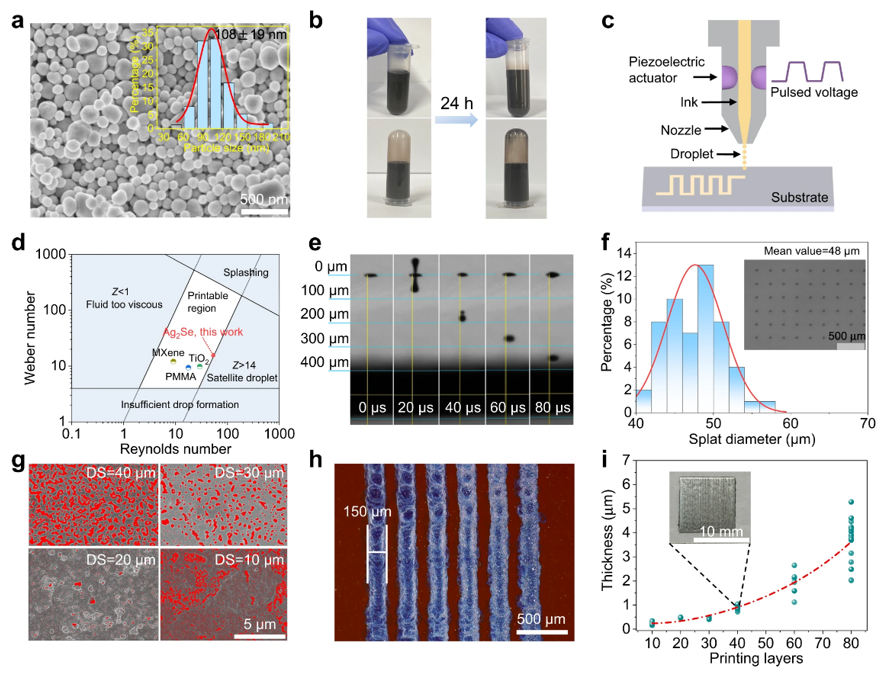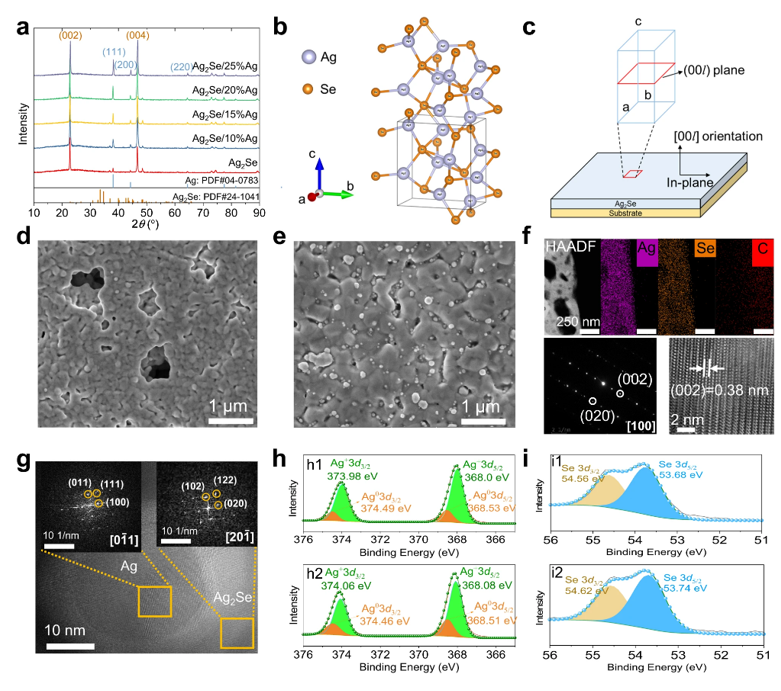
Congratulations to Aibin Huang for his contribution as co-first author in Nature Communications
Flexible thermoelectric materials and devices have received much attention for their ability to harvest thermal energy directly from the environment or human body to generate electricity. Flexible thermoelectric materials and devices have the advantages of small size, light weight, no moving parts, high reliability, and conformal contact with arbitrarily shaped heat sources, and are therefore promising for the sustainable power supply of an exponentially growing number of smart devices (e.g., self-powered portable/wearable low-energy electronic devices, ultra-widely distributed wireless sensor network nodes, and Internet of Things (IoT) devices). In general, there are two approaches to fabricate flexible thermoelectric devices: rigid lumped thermoelectric particles connected with flexible electrodes and substrates; and the development of flexible thermoelectric materials such as conductive polymers, inorganic thin films, organic-inorganic composites, and ductile semiconductors. Devices made from thin films offer excellent structural deformation because of their inherent flexibility, but they typically have lower output power densities, primarily due to the limited thickness and poor thermoelectric properties of the films.
In addition to performance metrics, another critical step towards the commercialization and industrialization of flexible thermoelectrics in areas such as electronics and energy harvesting is the realization of reliable mass production and processing of these films and devices. Traditionally, thin-film-based flexible thermoelectric devices have been fabricated mainly by photolithography combined with physical or chemical deposition processes. However, these methods suffer from a number of drawbacks, including numerous steps, expensive equipment, and the generation of large amounts of environmentally hazardous waste. Other methods, such as vacuum filtration and spin/spray coating, have also been used for thin-film-based device fabrication, but these methods offer poor control of film thickness and roughness, limited design flexibility, and low integration. In addition, the preparation of the films is independent of the device. As a result, when the film is assembled into the device, the performance is greatly rung down. As an alternative, ink-based printing technologies, including screen printing, dispenser printing, aerosol jet printing, roll-to-roll printing, and inkjet printing, are becoming increasingly prominent in facilitating efficient, versatile, and scalable fabrication of these, inkjet printing is particularly prominent in thin-film device fabrication due to its low cost, easy-to-change digital print patterns, and low material consumption. It enables precise deposition of micron and nanometer materials into functional arrangements in an impact-free, additive patterning and maskless manner, and has become a cutting-edge technology for advanced microelectronic devices with customized patterning and high precision. Research on inkjet-printed flexible thermoelectric materials (including PEDOT, Bi-Te alloys, graphene, and TiS2(HA)x, among others) has been in the press over the past decade, demonstrating a versatile platform for transforming material building blocks into functional devices. However, the power generation performance of the corresponding inkjet-printed thermoelectric devices is not comparable with that of conventionally fabricated devices. Furthermore, inkjet printing of micrometer-scale structures remains challenging due to the limited supply of printable high-performance thermoelectric inks. Innovative ink formulations that provide not only excellent processability and stability, but also on-demand tuning of the electronic and phonon transport properties is essential for the development of a new generation of high-performance inkjet-printed thermoelectric devices.
Ag2Se exhibits excellent thermoelectric properties below 100℃, making it a potential candidate for power generation using low-level heat. Currently, many research groups are working on preparing Ag2Se-based flexible devices and significant progress has been made. However, the integration, power generation performance and flexibility of the devices are still far from expectations. For example, some Ag2Se films show high power factor but poor control of film thickness and roughness, and low device integration with limited design flexibility. This is mainly due to the fact that these films are prepared independently of the device, resulting in a significant loss of performance during the assembly of the film into the device.
Flexible thermoelectric devices hold great promise as sustainable power devices for the exponentially growing number of self-powered wearable electronic devices and ultra-wide distributed wireless sensor networks. While exciting proof-of-concept demonstrations have been reported, their large-scale implementation has been hindered by unsatisfactory device performance and costly device fabrication techniques. Here, Prof. Guan Jiang and Prof. Lianjun Wang from Donghua University, together with collaborators Prof. Xun Cao from the Shanghai Institute of Ceramics and Prof. Qihao Zhang from the Karlsruhe Institute of Technology, have developed Ag2Se-based thermoelectric thin films and flexible devices via inkjet printing technology. Size-controlled large-area pattern arrays with micrometer-scale resolution were obtained by modulating the ink formulation and adjusting the printing parameters. The Ag2Se-based printed films exhibit a (00l) textural feature, and an excellent power factor (1097 μWm-1K-2 at 377 K) is obtained by engineering the film composition and microstructure. Thanks to high-resolution device integration, the fully inkjet-printed Ag2Se-based flexible devices achieve record high normalized power (2 μWK-2cm-2) and excellent flexibility. The inkjet-printed devices offer multiple application scenarios, such as continuous power generation by harvesting thermal energy from the environment or human body. Our strategy demonstrates the potential to revolutionize the design and fabrication of multi-scale and complex flexible thermoelectric devices at low cost, enabling their integration into emerging electronic systems as sustainable power sources. The research is published as “Fully inkjet-printed Ag2Se flexible thermoelectric devices for sustainable power generation” in Nature Communications, and Aibin Huang is the co-first author.

Figure. 1 Ag2Se nanoparticles synthesis and ink printing characteristics.

Figure. 2 Microstructure and phase composition of inkjet-printed Ag2Se based films.

